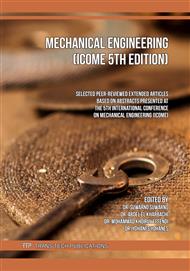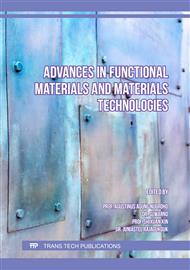p.83
p.89
p.95
p.101
p.107
p.115
p.121
p.131
p.139
Effect of Stand of Distance (SOD) of Abrasive Water Jet Cutting processes on the Corrosion Properties of Material implant Stainless Steel 316L
Abstract:
This work aims to reveal the effect of the stand of distance (SOD)during the abrasive water jet cutting processes of Material implant stainless steel 316L on its corrosion properties. Abrasive water jet cutting processes were conducted in 5 different SOD there are 1, 2, 3, 4, and 5 mm between the nose of the nozzle and substrate surface. After these processes, the cross-section of the substrate was evaluated on its corrosion character using the potentiodynamic polarization method under Cl based solution. This process was conducted at room temperature with an almost steady state condition scan using Ag/AgCl/KCl as the reference Electrode and Pt as the counter electrode. The Results show that the corrosion resistance decreased as the SOD increased.
Info:
Periodical:
Pages:
107-113
Citation:
Online since:
January 2023
Keywords:
Price:
Сopyright:
© 2023 Trans Tech Publications Ltd. All Rights Reserved
Share:
Citation:



